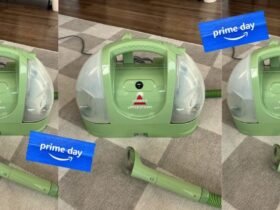Nostalgia has this sneaky way of tugging at your emotions, doesn’t it? It makes you smile at a song from high school or crave snacks from your childhood.
For businesses, nostalgia isn’t just sentimental—it’s smart. It taps into memories, builds emotional connections, and creates loyalty.
Let’s talk about how businesses use nostalgia and why it works so well. By the end, you’ll see how this strategy can fit into your own plans—whether you’re marketing candy or something totally different.
Key Takeaways
- Nostalgia triggers emotions that influence buying decisions.
- It strengthens customer loyalty by tapping into fond memories.
- Retro branding can make a product feel familiar and trustworthy.
- Nostalgic content performs well in ads, social media, and packaging.
- It’s a flexible strategy that works for all types of businesses.
Why Nostalgia Works So Well
Nostalgia connects the past to the present, reminding people of simpler times or happy memories. That emotional pull is powerful and works wonders for businesses that can tie it to their products.
Think about the experience of visiting nearby taffy shops, where the sights, smells, and flavors instantly transport you back to childhood vacations or carefree boardwalk strolls.
This isn’t about tricking anyone. It’s about making a genuine connection. If someone associates your product with joy or comfort, they’re more likely to trust you—and come back for more.
On top of that, nostalgia creates emotional resonance. People don’t just buy things for logical reasons; they buy because of how something makes them feel. Nostalgia taps directly into those feelings, giving businesses an edge in a competitive market.

Photo by alleksana on Pexels
How Businesses Use Nostalgia
1. Bring Back the Classics
Re-releasing an old product or using vintage packaging works like magic. Think about Coke’s retro cans or the Nintendo Classic console. People love the feeling of rediscovering something they already enjoyed.
Why does this work? It’s because these products feel familiar and comforting, yet they’re presented in a way that feels fresh. It’s a mix of the old and the new, which appeals to a broad audience.
Even small businesses can try this. Have a product with a strong history? Highlight it. Show how it connects to your customers’ past experiences.
2. Use Throwback Marketing
Ad campaigns that celebrate the past grab attention. A well-placed reference to the ’90s or even the early 2000s can resonate with your audience. Nostalgia-based ads are shareable too, which is gold for social media.
Companies often add a modern twist to these campaigns. It keeps things relevant while still playing on those old memories. A good example is Spotify’s “Year in Review,” which taps into personal memories while promoting their platform.
Throwback marketing can work in any industry. Are you in retail? Feature old trends coming back. In tech? Highlight the evolution of your product. It’s all about connecting with the past while staying relevant.
3. Celebrate Milestones
Anniversaries are great excuses for nostalgic marketing. A “50 Years of Excellence” campaign not only highlights your longevity but also connects to customers’ memories of your brand.
For example, McDonald’s has celebrated its classic menu items and history with milestone campaigns. These aren’t just celebrations—they’re opportunities to reinforce brand loyalty.
You can even highlight customer milestones. Think about loyalty programs that celebrate long-time customers. A simple “thank you for being with us for 10 years” goes a long way in building trust and connection.


Photo by Suzy Hazelwood on Pexels
4. Create Nostalgic Content
Content that takes people down memory lane tends to do really well online. Post throwback photos, “Remember When” lists, or quizzes about the past. People love engaging with content that reminds them of their youth.
This kind of marketing is cheap, effective, and easy to execute. It’s all about knowing your audience and what makes them nostalgic. For a brand that’s been around for a while, old photos or ads can trigger positive emotions.
Don’t overlook user-generated content, either. Ask your customers to share their memories of your brand. Not only does this create engagement, but it also builds authenticity.
5. Sell Experiences, Not Just Products
Sometimes nostalgia isn’t about what you’re selling but how you’re selling it. Stores that create an old-school shopping experience or brands that emphasize traditional methods—like handmade goods—tap into that nostalgic vibe.
For example, some bookstores bring back the joy of browsing by mimicking the cozy, personal feel of libraries. Similarly, bakeries that highlight old-fashioned recipes appeal to those who value tradition.
It’s not about being flashy; it’s about making people feel at home. That emotional connection can be the difference between a one-time customer and a loyal fan.
Nostalgia Meets Business Growth
If you’re wondering if this strategy really works, look at the numbers. Studies show that ads with a nostalgic theme are more likely to make people feel good—and that positivity translates into sales.
But nostalgia doesn’t just sell—it builds loyalty. When people associate happy memories with your brand, they’re not just buying a product. They’re buying a feeling. That’s not easy to forget.
Nostalgia also sparks conversations. It gets people talking, sharing, and engaging. In the age of social media, that kind of organic promotion is invaluable.
Taffy: A Nostalgic Treat That Sells Itself
Take saltwater taffy, for example. Just hearing the name might remind you of trips to the boardwalk or candy shops from your childhood. The simple joy of unwrapping a piece of taffy? That’s nostalgia at work.
For businesses like nearby taffy shops, nostalgia isn’t just part of the brand—it is the brand. They’re selling more than candy; they’re selling memories.
Taffy’s timeless appeal makes it the perfect product to highlight nostalgic branding. Whether it’s the old-school packaging or the classic flavors, every element contributes to that emotional connection.
And if you’re in the candy business, expanding into Wholesale Taffy can let you share this nostalgic treat with even more customers. Wholesale options bring the magic of taffy to new markets, creating opportunities for growth.
Is Nostalgia Right for Your Business?
You don’t need to sell candy or vintage products to use nostalgia. The key is knowing your audience and what matters to them. If your customers value tradition, history, or sentimental moments, nostalgia can work for you.
Think about your brand’s story. Are there parts of your history that you can highlight? Or maybe your product has a connection to a specific era? Start small and see how your audience responds.
Nostalgia is flexible. It works for big companies and small businesses alike. All it takes is a thoughtful approach and a focus on emotional connections.
Final Thoughts
Nostalgia isn’t just a trend—it’s a tool. It helps you connect with your audience in a way that feels real and meaningful. Whether you’re reintroducing a classic product or creating content that sparks memories, it’s all about making people feel something.
So, why not give it a try? Whether you’re selling candy, clothes, or services, there’s a way to tap into those warm, fuzzy feelings. And when you do, you’re not just making sales—you’re building relationships that last.
Full disclosure: She Owns It partners with others through contributor posts, affiliate links, and sponsored content. We are compensated for sponsored content. The views and opinions expressed reflect those of our guest contributor or sponsor. We have evaluated the links and content to the best of our ability at this time to make sure they meet our guidelines. As links and information evolve, we ask that readers do their due diligence, research, and consult with professionals as needed. If you have questions or concerns with any content published on our site, please let us know. We strive to only publish ethical content that supports our community. Thank you for supporting the brands that support this blog.



















Leave a Reply